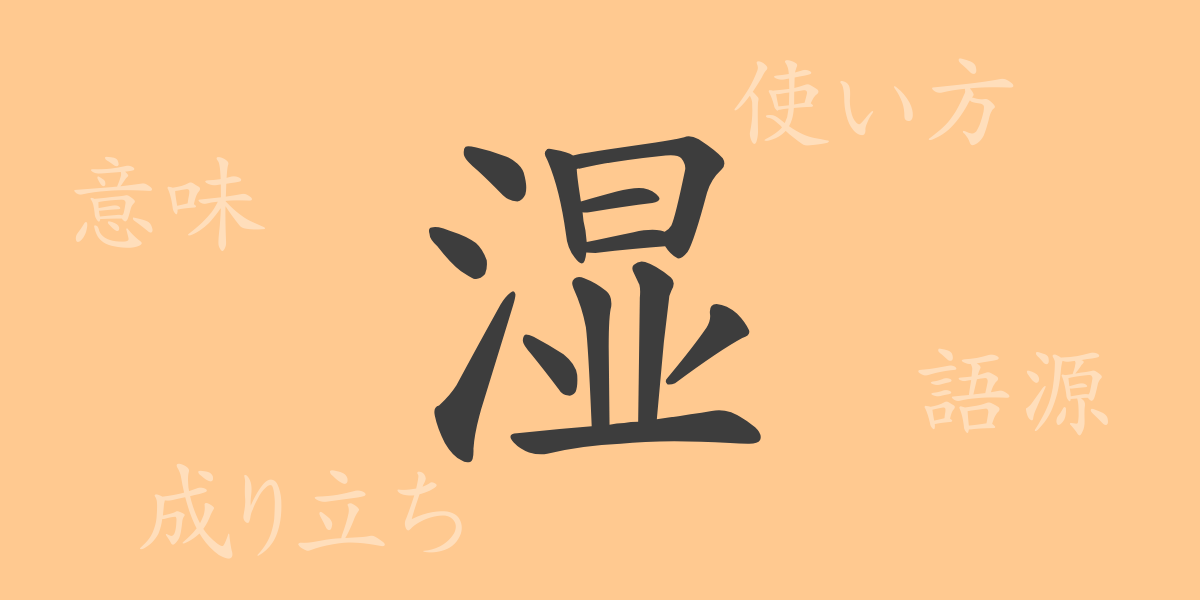In the Japanese language, countless kanji characters exist, each with its unique history and meaning. One such kanji frequently encountered in daily life is “湿(しつ).” This article delves into the origins, modern usage, readings, radicals, and idioms involving the kanji “湿(しつ),” revealing its deep charm. Through understanding this kanji, closely related to Japan’s humid climate, we hope you appreciate the profound depth of the Japanese language.
Origins of 湿 (Etymology)
The kanji “湿(しつ)” evolved from ancient Chinese pictographs depicting grass growing by the water’s edge. The original form combines the water radical “氵” (さんずい) and the grass radical “艹” (くさかんむり), illustrating plants growing in a moist environment. Over time, this kanji came to describe various moisture-related phenomena.
Meanings and Usage of 湿
The kanji “湿(しつ)” is used to describe things that contain moisture. It has versatile applications, including weather conditions, health, textures, and material properties. For example, “湿度(しつど)” refers to the amount of moisture in the air, “湿気(しっけ)” denotes water vapor present in objects or spaces, and “湿布(しっぷ)” is a cloth imbued with medication, commonly used in medical treatments.
Readings, Stroke Count, and Radical of 湿
The kanji “湿(しつ)” enriches Japanese expressions through its form and meaning.
- Readings: The on’yomi (音読み) is “シツ,” and the kun’yomi (訓読み) readings are “しめ.る,” “しめ.す,” “うるお.う,” and “うるお.す.”
- Stroke count: 12 strokes.
- Radical: The radical is “氵” (さんずい), categorizing it among water-related kanji.
Idioms, Phrases, and Proverbs Using 湿
Idioms and phrases featuring “湿(しつ)” add vivid color to the Japanese language. For instance, “湿気る(しける)” describes an object becoming overly moist, “湿潤(しつじゅん)” refers to being richly moist or hydrated, and “湿原(しつげん)” denotes a wetland area, signifying a specific ecosystem. These terms are essential for expressing various aspects of moisture in nature and daily life.
Conclusion on 湿
The kanji “湿(しつ)” has been used since ancient times to represent the crucial element of moisture in nature. In modern Japanese, its applications span weather, medicine, and various aspects of daily life. Through this exploration, we hope to reaffirm the layered meanings of each kanji character and the richness of Japanese expressions. By deeply understanding kanji like “湿(しつ),” you can better appreciate the sensory and cultural nuances embedded in the language.

























